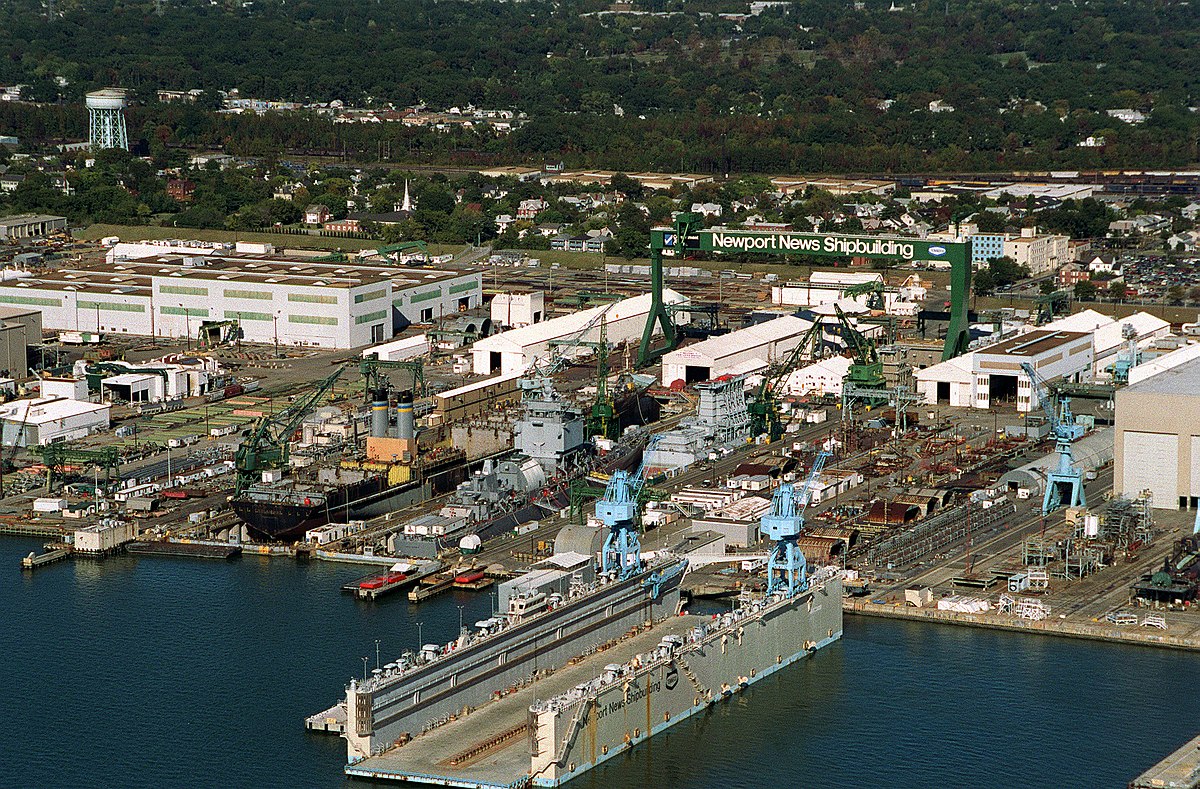As you know, the Second Vinson Act of 1938 provided for 40,000 tons of CVs, namely CV-8 and CV-9. The first, CV-8 Hornet, was laid down late 1939, but CV-9 was delayed until spring 1941 and built to a new design.
For this ATL, let's suppose they build CV-9 roughly the same time as CV-8 (to the Hornet design), i'm looking at laying down dates from late 1939 to first part of 1940. My question is where could CV-9 potentially be built, what shipyard? I wouldn't want to assume this ATL on thin air ("they just build it somewhere"), i'm after a reasonably plausible location.
There is of course the very useful chart of IJN shipyards large slipways and what is built on them which is so fun to play with, and i DO have printed (thankfully, as i have never been able to relocate that file online since, neither on my computer yet, it was on a forum somewhere) a similar document compiled by someone showing the major US shipyards, slipways and their lengths and major warships built on each down to CLs, but unfortunately it starts only from June 1940. Is there such a compilation showing US major ships, shipyards and slipways before 1940?
It looks like CV-9 would need at least a 900ft slipway/building dock, in the timeframe i'm looking for according to the file i have there are two 900ft ways at Fore River (CL-53, 54) and 3 at NY Shipbuilding (CL-55,56,57), as seen they are merely building CLs, and the last 3 are quite late for what i'm after (CLs were started after middle of 1940), but i guess one of the CLs can be postponed to build CV-9 instead.
I know that the massive US shipbuilding capacity is always mentioned, but even they were not a bottomless pit, besides the massive shipyard expansion has not started yet, it did after the Two Ocean Act. So my question is, is there some idle 900ft slipway somewhere that can be used to build CV-9 starting late 1939 (if so, where, though seems unlikely), or it is reasonable to assume CV-9 has to displace another ship being built on a 900ft slipway, either a BB or more likely one of those CLs i mentioned?
The third option is to assume they will build a new slipway somewhere for CV-9 (like they did for the Essexes after 1940), though probably that's unrealistic for a 1939 timeframe?
For this ATL, let's suppose they build CV-9 roughly the same time as CV-8 (to the Hornet design), i'm looking at laying down dates from late 1939 to first part of 1940. My question is where could CV-9 potentially be built, what shipyard? I wouldn't want to assume this ATL on thin air ("they just build it somewhere"), i'm after a reasonably plausible location.
There is of course the very useful chart of IJN shipyards large slipways and what is built on them which is so fun to play with, and i DO have printed (thankfully, as i have never been able to relocate that file online since, neither on my computer yet, it was on a forum somewhere) a similar document compiled by someone showing the major US shipyards, slipways and their lengths and major warships built on each down to CLs, but unfortunately it starts only from June 1940. Is there such a compilation showing US major ships, shipyards and slipways before 1940?
It looks like CV-9 would need at least a 900ft slipway/building dock, in the timeframe i'm looking for according to the file i have there are two 900ft ways at Fore River (CL-53, 54) and 3 at NY Shipbuilding (CL-55,56,57), as seen they are merely building CLs, and the last 3 are quite late for what i'm after (CLs were started after middle of 1940), but i guess one of the CLs can be postponed to build CV-9 instead.
I know that the massive US shipbuilding capacity is always mentioned, but even they were not a bottomless pit, besides the massive shipyard expansion has not started yet, it did after the Two Ocean Act. So my question is, is there some idle 900ft slipway somewhere that can be used to build CV-9 starting late 1939 (if so, where, though seems unlikely), or it is reasonable to assume CV-9 has to displace another ship being built on a 900ft slipway, either a BB or more likely one of those CLs i mentioned?
The third option is to assume they will build a new slipway somewhere for CV-9 (like they did for the Essexes after 1940), though probably that's unrealistic for a 1939 timeframe?
Last edited:

